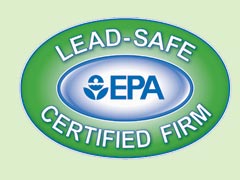Lead-Safe: At What Cost? - Page 3
With the opt-out removed, many remodeling pros say the EPA is hurting the construction and remodeling industry, which had been seriously impacted by the economic downturn. "There's a lot of validity to support the implementation of these lead-free requirements," points out a Northern California contractor who didn't want to be named, "but they [the EPA] are making it so onerous for contractors and homeowners alike."
A coalition of housing industry groups, including the National Association of Home Builders, The Hearth, Patio & Barbecue Association, the National Lumber and Building Material Dealers Association, and the Window and Door Manufacturers Association, announced in July 2010 that they are filing a lawsuit against the EPA to remove the opt-out provision from its RRP rule.
"Removing the opt-out provision more than doubles the number of homes subject to the regulation," says NAHB Chairman Bob Jones, a homebuilder and developer in Bloomfield Hills, Michigan. "About 79 million homes are affected, even though EPA estimates that only 38 million homes contain lead-based paint. Removing the opt-out provision extends the rule to consumers who need no protection."
Photos: John Eng, David Toerge
FOR FURTHER INFORMATION
Environmental Protection Agency
epa.gov/lead/pubs/renovation.htm
EPA Regional Office (Region 9)
San Francisco • 415-744-1117
National Lead Information Center
(for info on risk assessment and lead testing)
1-800-424-LEAD
Lead poisoning dangers are real

Lead paint poisoning affects more than 300,000 children under five years of age each year, according to the U.S. Centers for Disease Control and Prevention. In the face of this unsettling statistic, the EPA's new RRP rule requires contractors whose renovation, repair, and painting projects can disturb lead-based paint in homes, schools, and child care facilities constructed before 1978 to be certified and follow specific work practices to prevent lead contamination.
"Lead poisoning from paint in older homes harms an unacceptable number of children each year," says Lisa Jackson, administrator of the EPA. "Dust and chips from lead paint can cause serious health problems like learning disabilities and behavioral issues leading to a lifetime of challenges."
Lead is a toxic metal that was used for many years before 1978 in products found in and around homes. In older homes, it may be found in deteriorating lead-based paint, lead-contaminated dust, and soil. It can also enter drinking water through plumbing materials.
Eighty percent of all housing in the United States built before 1978 contains some lead-based paint on the interior or exterior, according to the EPA. Lead-based paint is defined by the federal government as paint with lead levels greater than or equal to 1.0 milligram per square centimeter, or more than 0.5% by weight.
Exposure to the substance can cause a variety of serious health problems, ranging from behavioral issues and learning disabilities to seizures and even death. Although lead can harm everyone, children six years old and younger are most at risk. In fact, babies can be affected by lead while they are in the womb.
The U.S. government has taken several steps over the last 30-plus years to help reduce the risk of lead poisoning. The Consumer Product Safety Commission banned lead paint in 1977.
In 1996, the Lead-Based Paint Disclosure Regulation was enacted. It required owners of pre-1978 'target housing' to disclose all known information about the presence of lead-based paint in the property to potential buyers or renters. The regulation also required that the potential buyer or tenants be given the lead information pamphlet, 'Protect Your Family from Lead in Your Home,' or another pamphlet approved by the United States Environmental Protection Agency, as well as a specific disclosure statement.
The option of whether to actually test for the presence of lead-based paint was left to the owner, as long as a decision not to test was disclosed. In April 2008, the EPA signed the RRP, which went into effect exactly two years later.
What contractors are required to do
Contractors who perform work with the potential to disturb lead-based paint in your mid-century home are now required to do the following:




